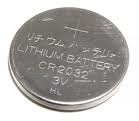Researchers Develop Battery Powered By Sugar
Scientists at St. Louis University claim to have developed an environmentally friendly battery that runs on sugar water.
SCIENTISTS have developed a battery that can run from soft drinks.
One of the first uses for the fuel-cell battery, powered by almost any type of sugar, could be as a portable mobile phone charger.
The device would contain special cartridges filled with a sugar solution which could be replaced when they were empty.
Researchers at St Louis University in Missouri believe their idea could eventually replace lithium in batteries in many portable electronic applications, including computers.
The biodegradable battery contains enzymes that convert fuel – in this case, from sugar – into electricity, leaving behind water as a main by-product.
Pretty cool, if true. The article claims that the batteries should be ready for consumer purchase in three to five years. If it works as claimed, these folks might have done more for the environment than a legion of lobbyists, easy. Not only is lithium pretty environmentally nasty, but if all it takes to recharge the battery is simple table sugar, who knows how many kilowatts of power will simply no longer have to be generated in order to recharge batteries. Very cool stuff.






“The biodegradable battery contains enzymes that convert fuel – in this case, from sugar – into electricity, leaving behind water as a main by-product.”
And CO2?
And CO2?
I’m not sure how they can avoid that. But given inefficiencies in power transmission, I would say that the net CO2 generated is less that the recharging of lithium batteries.
I think someone (far smarter and more knowledgeable than me) would want to calculate how much energy it would take to grow, harvest, process and transport the sugar vs plugging the cell phone into the wall.
yetanotherjohn,
While I profess I haven’t studied the particular comparison in detail, I find it difficult to believe that sugar growing, harvesting and transport is more energy intensive than mining and transporting coal, or drilling for and transporting oil.
Yeah, but remember you can only take three ounces of it onto a plane.
Said growing relies on oil based fertilizers.
Said Harvesting relies on oil run combines.
Said transporting relies on oil fueled trucks/trains.
Not that this is a bad idea, but it just isn;t a panacea anymore than Hydrogen fuel cells are. Our energy economy is still almost entirely oil based even if this tech were to be widely distributed. That’s what needs to be changed.
1. Alex, I think you’ve got your battery “iums” mixed up. CADMium, as in Ni-Cad batteries, is world-class nasty stuff. LITHium, while it does have issues, is not particularly nasty. In small doses, it’s even a pharmaceutical. Given all the nasty pesticides and herbicides involved in sugar production, it’ not clear switching from Lithium to sugar is an environmental win.
2. YetanotherJohn, you are spot on. Yes, power line losses run 10-20%, but that is from power plants that are vastly more efficient than anything else available. Sugar, on the other hand, requires significant energy inputs via fertilizers, processing (the “evaporation” in “evaportated cane juice” requires a lot of energy), and transport.
3. The real issue convenience. Many of the the ideas for powering portable devices will take a decade or more to get FAA blessing[*], whereas sugar water is already on these planes. So it’s still pretty exciting, although I am pessimistic this will actually work: the energy density (by weight and by volume) is too low for a portable cosumer device. And it will leak.
[*] Or at least, it should. The balance of risks are: (1) not finishing that power point pitch vs (2) plunging 300 people to a fiery death